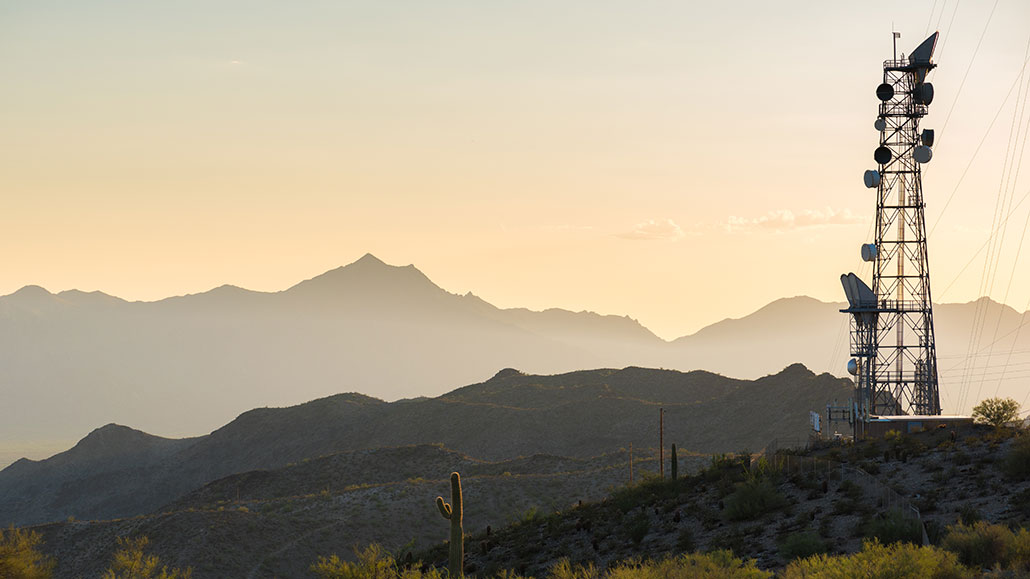5G promises new energy savings for digital tech
Some of that savings will come from new opportunities made possible by this technology

Huge cell towers, like this one, blast out lots of energy. The 5G network will contain smaller antennas that require much less power to run.
AndyKleinPhotography/iStock/Getty Images Plus
Almost all apps and programs on wireless devices today communicate constantly with the internet. They pull the images, videos and other files you want from distant data centers. Apps and programs that use cloud computing do their processing at these data centers, too. Data usually shuffle between phones and data centers on Wi-Fi or mobile networks. Those data are carried by radio waves. Blasting out these waves takes energy. And today’s networks can be very wasteful. But emerging 5G technology may help a lot here.
Starting around 2020, telecommunications companies began rolling out this brand-new mobile network. It uses short-range 5 gigahertz Wi-Fi signals. They operate at a much higher frequency than in the networks they are replacing. 5G tends to be faster and use less energy. By 2023, 5G networks are expected to be standard in the United States and many other industrial nations.
A cellular network consists of antennas that send and receive radio waves. Before 5G, each of these antennas stuck out from the top of a tall tower. They typically covered a circle of several miles, also known as a cell. When inside one of these cells, a phone can use the network. The farther away from a tower it is, the harder it will be to get a signal.
You might think 5G would use bigger towers to reach super far. In fact, it’s the opposite. 5G relies on more, smaller cells. The 5G antennas that provide the fastest speeds reach just 500 meters (around 1,500 feet). If you add up all the small cells covering the same area as one large one, the small ones consume less power, explains Kerry Hinton. Now retired, this engineer used to work at the University of Melbourne in Victoria, Australia. There, he had studied energy use in telecommunications.
Small cells are less likely to waste energy by covering places with few people, Hinton notes. He gives the example of sports arenas and entertainment venues. When an event is happening, lots of people need the network. A small cell can support all of them. But at night or when no events are happening (like during the coronavirus pandemic), a cell can shut down. “Small cells make the network smarter,” says Hinton.
5G also compresses data more than earlier networks, such as 4G. So it can send “more data in the same time,” explains Roland Hischier. He is an environmental expert at the Swiss Federal Laboratories for Materials Science and Technology in St. Gallen. This means faster uploads and downloads for you — up to 600 times faster, according to one estimate. The compression also lowers the energy used to send each unit of data.
In a study out late last year, Hischier and his team projected that within 10 years, the environmental cost to send one unit of data on the mobile network in Switzerland should drop by 85 percent. Most of savings would come from a move to 5G. His team’s work included the environmental costs of building new antennas and upgrading old ones.
Savings from 5G don’t just come directly from the network itself, he points out. Having such an advanced network now makes it possible to save energy and resources in other ways. For example, right now most farmers fly airplanes over their fields to spread fertilizer or pesticide. And these treatments go nearly everywhere on a field. Producing these chemicals emits harmful pollution. The 5G network will make it possible to use drones that target only those areas that really need to be treated. So farming could have less of an impact on the environment.







